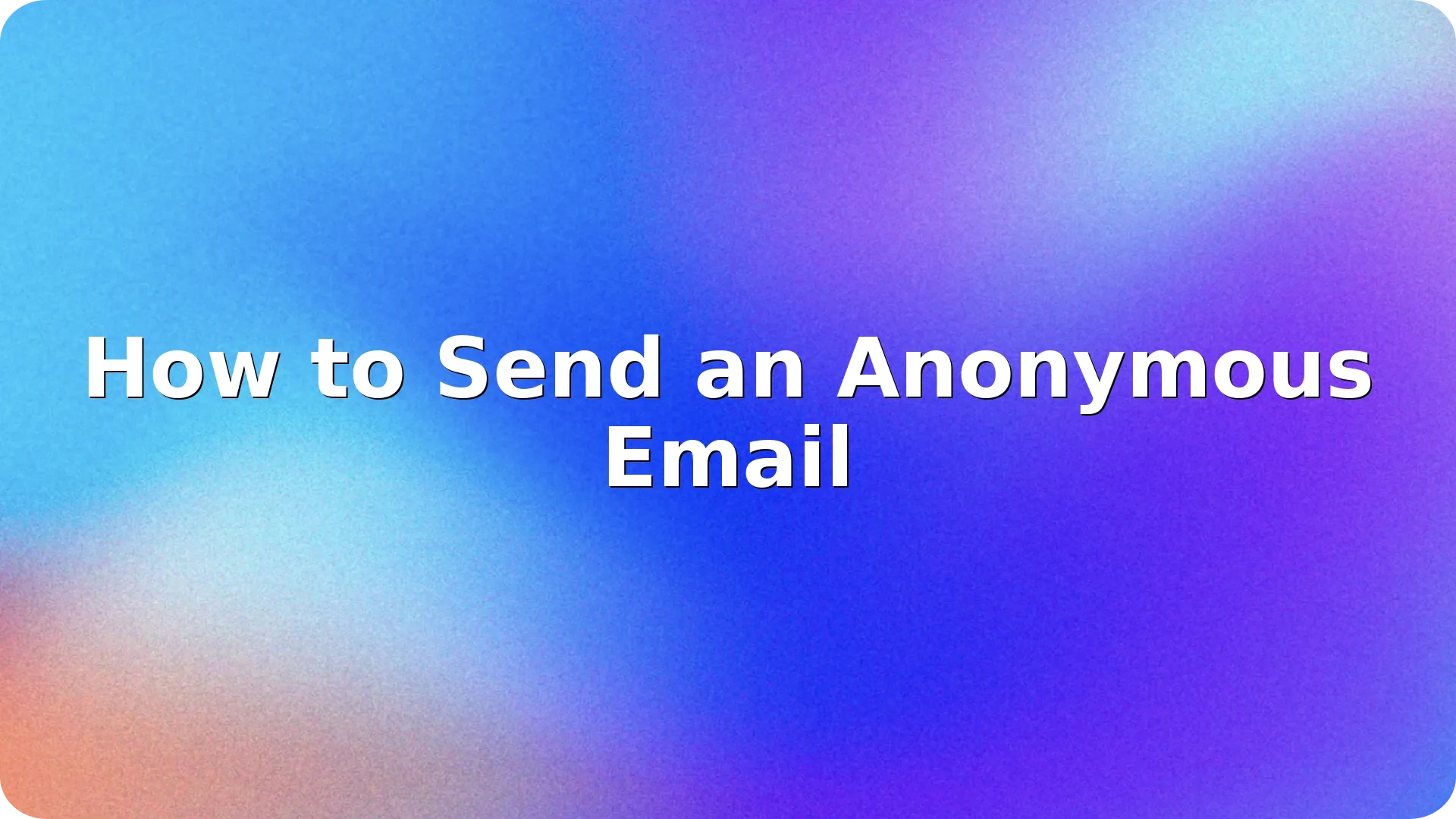
In a world where digital privacy is increasingly difficult to protect, knowing how to send an anonymous email can be a valuable tool. Whether you’re a whistleblower, protecting your identity for safety reasons, or simply want to keep your communication private, anonymous email methods can help you send messages without leaving a digital trail.
Unlike regular email services like Gmail or Outlook that link to your personal data, anonymous emailing involves tools that hide your IP address, encrypt your message, and require no personal information to use. In this guide, you’ll learn several free, private methods that anyone can use to send emails without revealing their identity.
This is also a useful extension of broader strategies covered in our Email Management guide, which explores tools for safe, secure, and efficient email use.
There are many legitimate reasons someone might want to hide their identity while sending an email:
Whatever the reason, it’s important to use tools that are actually secure and avoid common pitfalls that could expose your identity.
Burner email providers let you send and receive emails temporarily, often without any signup. Popular options include:
These services generate a temporary email address that self-destructs after a short time. They’re best for one-time use and don’t require any personal information.
For more robust privacy, consider anonymous email services that encrypt your messages and strip identifying information. These include:
These services offer more security than basic burner tools and are ideal for ongoing anonymous communication.
If you prefer using Gmail, Outlook, or Yahoo anonymously, follow this method:
This is a hybrid approach that provides more flexibility while keeping your real identity hidden.
Tor Browser routes your traffic through multiple encrypted layers to hide your location. Using Tor with ProtonMail or a similar provider offers extremely strong anonymity.
Steps:
Avoid attaching metadata-heavy files like unedited photos, as they can reveal personal information.
Understanding how to send an anonymous email is essential for anyone concerned about privacy, especially in sensitive situations. From burner addresses to fully encrypted tools, these methods allow you to communicate freely without exposing your identity. Whether you’re reporting an issue, sharing a confidential tip, or just keeping your personal life separate, the tools shared above give you the freedom to stay private and secure.
Yes, sending anonymous emails is legal in most countries as long as it’s not used for illegal activity such as harassment, fraud, or threats.
Many anonymous emails can be traced if sent through regular providers or without proper precautions. Using tools like ProtonMail with a VPN or Tor significantly reduces this risk.
If the sender used a burner service with reply functionality or a secure inbox like ProtonMail, replies may be possible. Some methods are one-way only.
Most tools like Guerrilla Mail, ProtonMail, and Tutanota offer free versions. Paid upgrades add features like more storage, custom domains, or priority support.


Kerala, known for its vibrant digital landscape, is home to some of the top SEO agencies in India. …
Read more

Hyderabad has rapidly emerged as a major hub for digital marketing and search engine optimization (…
Read more

In today's digitally driven marketplace, Search Engine Optimization (SEO) has become an essential c…
Read more

With over 97% deliverability you can ensure the best results.